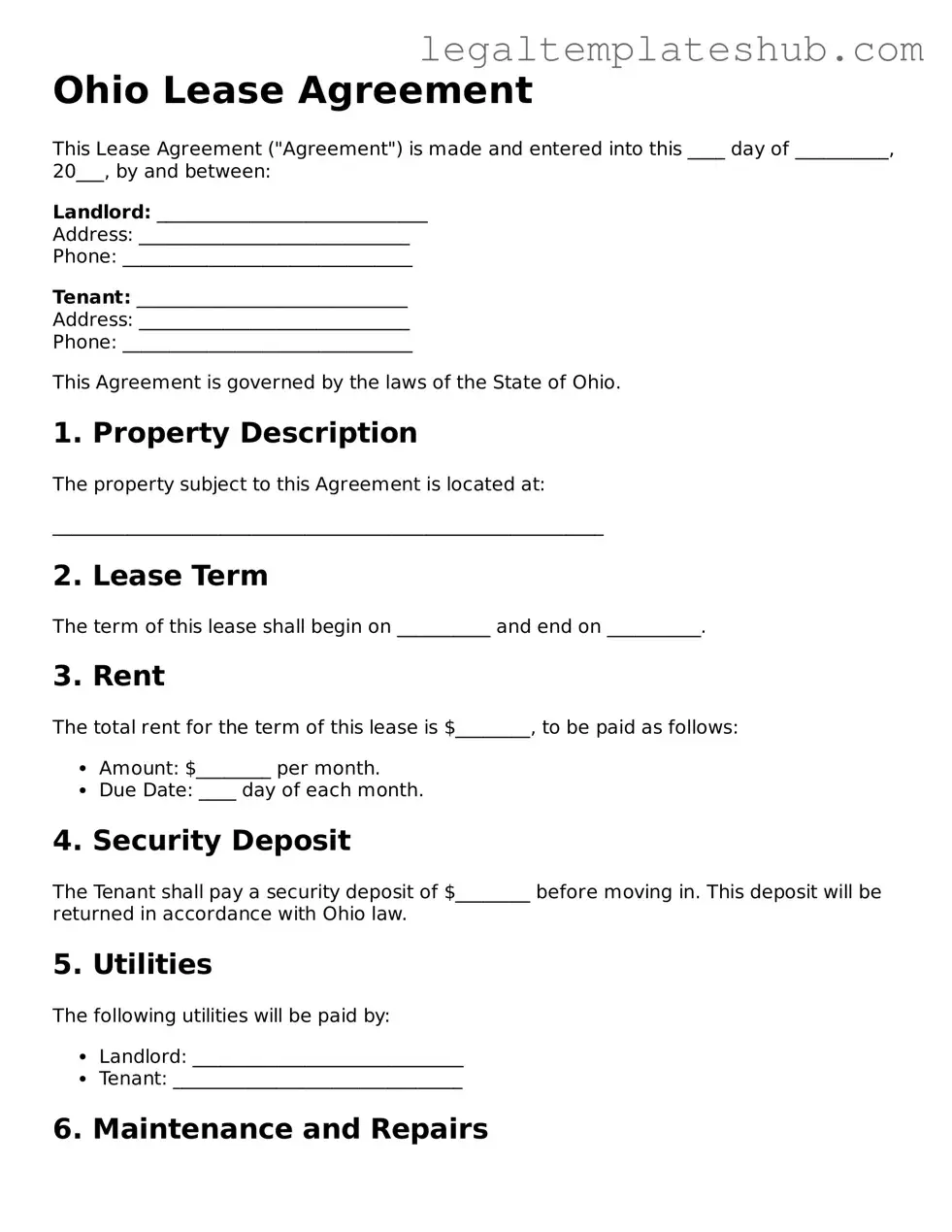Printable Lease Agreement Document for Ohio
The Ohio Lease Agreement form is a legal document that outlines the terms and conditions between a landlord and tenant for renting a residential property in Ohio. This form serves as a binding contract, ensuring both parties understand their rights and responsibilities. To get started with your lease, fill out the form by clicking the button below.
Access Editor
